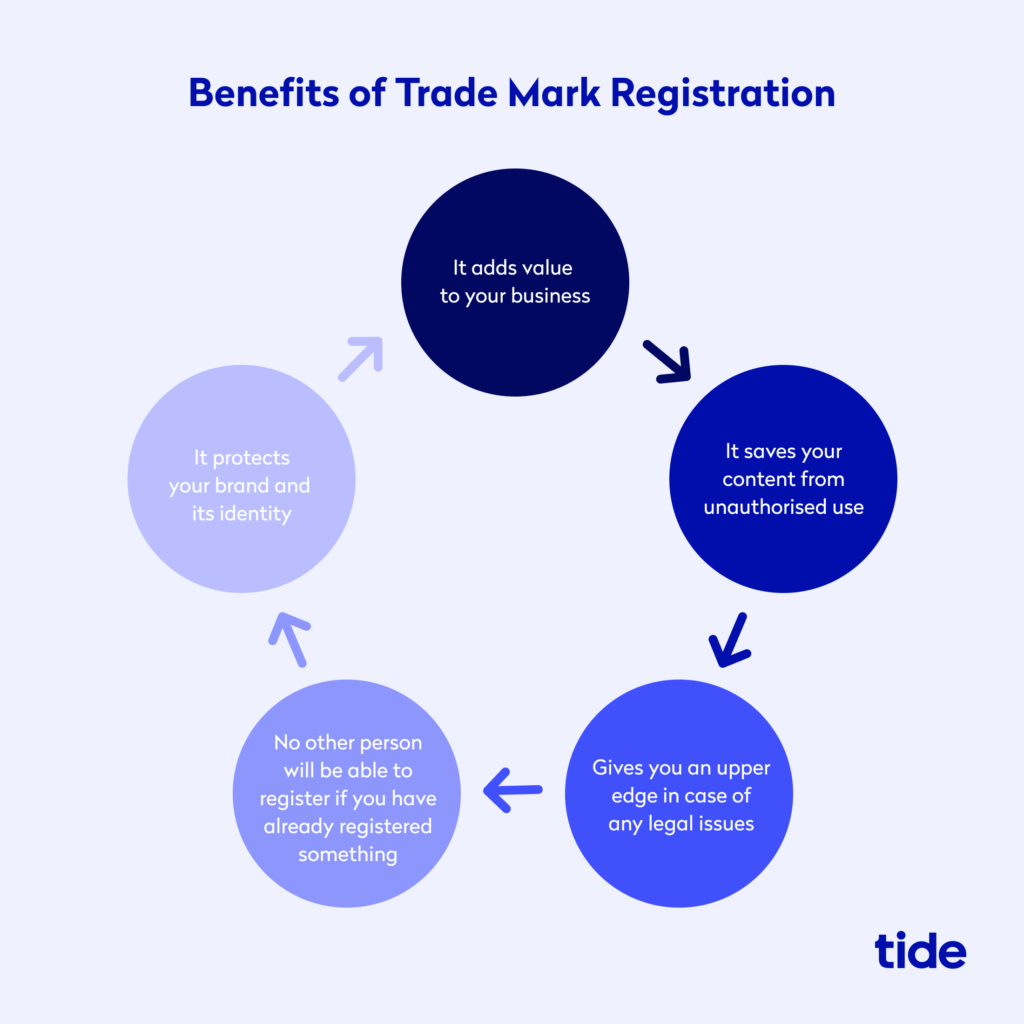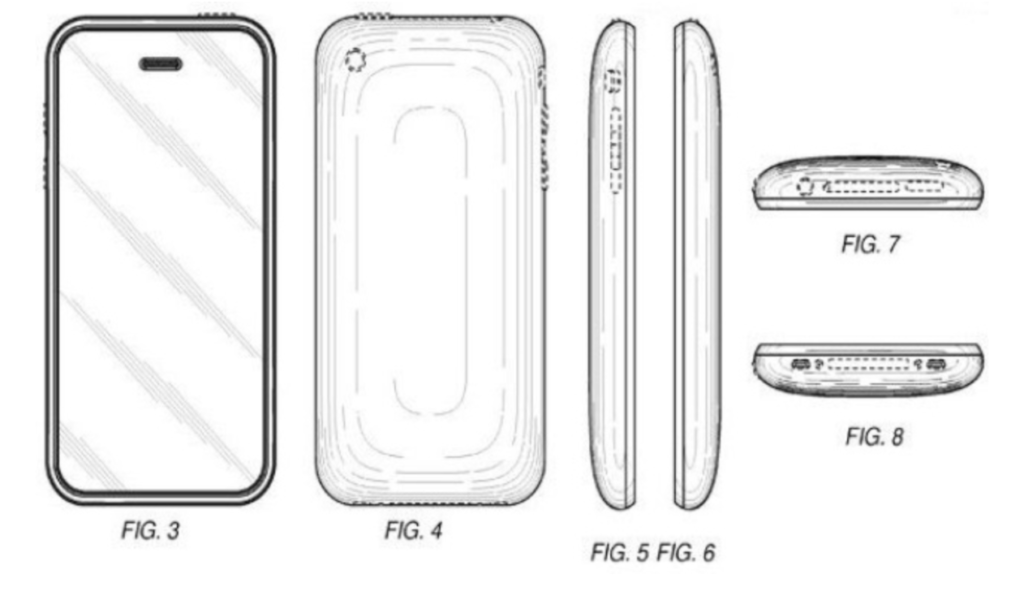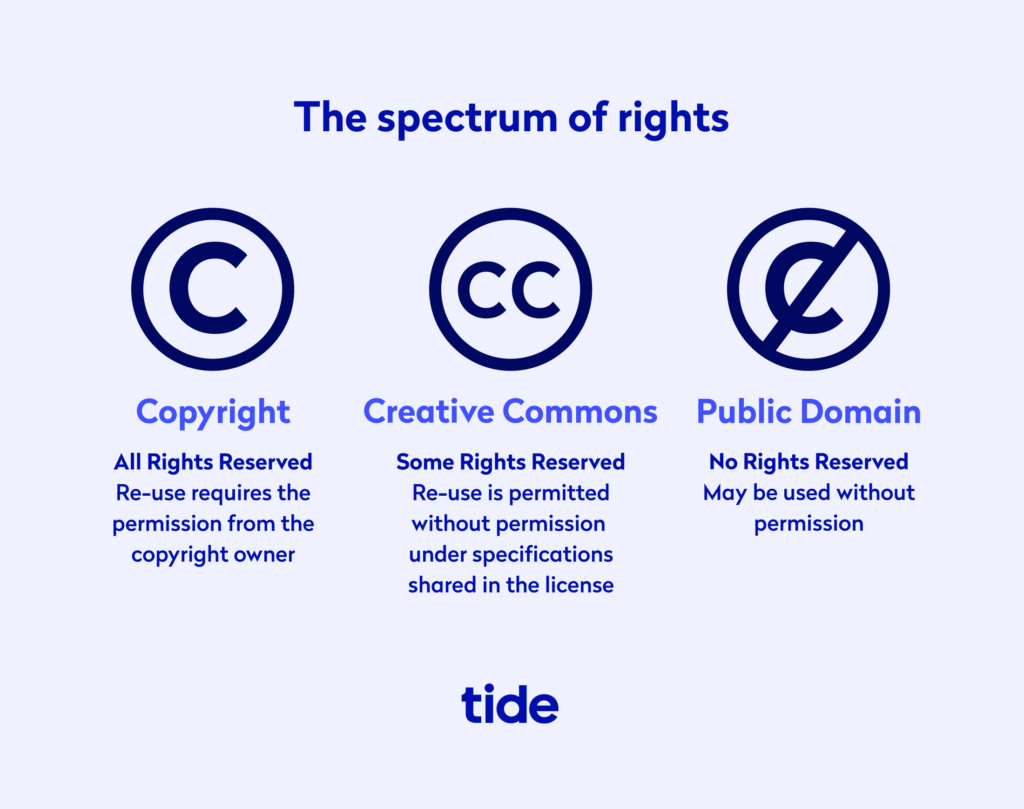
How to protect a business idea: Securing your intellectual property

Before you launch your small business in the UK, you should consider protecting your intellectual property (IP).
Intellectual property can be anything that you create and intend to put into the public domain. Intellectual property rights are the actions that you can take to protect your innovative idea(s) from a person or business who may attempt to replicate or steal it and claim it as their own.
Protecting your IP may play a crucial role in whether or not your small business or startup achieves success. Your core business assets are valuable and thus protecting them early is key.
In this article, we’ll outline what intellectual property is, the different types of IP to consider and explain exactly how to protect your business idea.
Table of contents:
- What is intellectual property?
- Why is it important to protect intellectual property?
- What are the different types of intellectual property?
- How to protect your business idea
- Expert insights
- 📹 Masterclass video: How to create an innovative business idea
- Wrapping up
What is intellectual property (IP)?
Intellectual property (IP) is an umbrella term for anything that you create and intend to protect from unauthorised use. Whether it be a new product, artwork, images, software, or copy, if you create it for yourself and not for another person or company, you have the lawful right to protect it from exploitation or replication.
According to GOV.UK, you own intellectual property if you:
- Created it and meet the requirements of IP protection (more on this in a later section)
- Bought IP rights from the creator and/or the previous owner
- Built a brand with a popular term that could easily be reused by others if you do not trade mark it
Intellectual property can:
- Have more than one owner if the idea was devised by more than one person
- Belong to either an individual person (or persons) or a business entity
- Be sold or transferred, which is known as an “assignment”. Note: This is different from licensing your IP, which involves giving the right to another person or business to use your IP. Design agreements involve transferring all of your rights to another person or entity with the intention of no longer owning that IP thereafter.
If you are self-employed, you will own your IP as long as you create it for yourself. However, if you are contracted by a person or business, the IP you create is presumed to be owned by the person or business you create it for. Yet, if the business fails to have you sign a contract stating they own the IP you create for them, then you are the rightful owner of said IP.
Therefore, as a business owner, it’s best practice to clearly state in all contracts that IP created by a contractor or employee will belong to your business. This will help you to avoid any potential legal issues or liability should it arise. If you fail to do so, you can always have the contractor sign an assignment document to officially transfer the IP back to your business.
Further, if you need to tell someone about your idea(s) before you can apply to protect it, you can use a business confidentiality agreement such as a non-disclosure agreement (NDA) or a non-compete agreement.
Some intellectual property rights are granted automatically and some you need to apply for. Intellectual property also has a time limit and must be continuously renewed. We will discuss the different types of IP and how to maintain them in detail in a later section.
Top Tip: Businesses are often exposed to unnecessary legal risks that could otherwise be avoided. Learn more with our top tips to avoid legal headaches in your business 🌟
Why is it important to protect intellectual property?
As a small business or startup owner, you should strongly consider protecting your business idea. That includes your name, logo, products or services.
When starting your own business, you are investing tons of time, energy and resources into entrepreneurship, materialising your idea and business plan. The last thing that you want to do is fail to protect your hard work and risk having it stolen or copied by a third party.
However, protecting your IP doesn’t guarantee that a third party won’t attempt to copy your idea. Thus, taking the steps to protect your IP makes it easier to not only safeguard your idea but to take legal action against a person or business who attempts to steal it.
Intellectual property rights (IPR), therefore, are a powerful tool that helps to shield your IP from harm whilst protecting your market share. IPR grants you exclusive rights to maintain an indefinite monopoly over the market, as long as you consistently renew them.
What are the different types of intellectual property (IP)?
As mentioned above, some IP rights are automatically granted whereas others must be applied for under intellectual property law. Let’s examine the varying types of IP.
Trade marks
A trade mark protects your business identity. This includes recognisable IP, like a business name, logo or design. Your trade mark is a way to distinguish your brand from the competition and ensures your identity cannot be copied by others. It also helps your business to look more professional and reliable.
Coca-Cola, for example, has the term ‘Coca-Cola’ trade marked in plain block capitals, but also in the distinctive Spencarian script font and other formats.
Trade marks are acceptable if they are used to help identify and separate your branded, recognisable products or services from other brands.
There are several types of trade mark IP in the UK.
- Unregistered rights: As alluded to in a previous section, some IP does not need to be applied for. Unregistered trade mark rights may accumulate over time through goodwill. However, assuming that your brand has accumulated enough validity to be considered trade marked is risky. There is no guarantee that a court will agree with you, thus registering your trade mark is the recommended route.
- Registered rights: Registering your trade mark gives you undeniable proof that your core brand assets are in fact owned by you. Registered trade marks are far easier to enforce than unregistered ones. Once registered, you should place the ® symbol next to your brand to show that it’s registered and dissuade theft.
- Territory: A trade mark is territorial, meaning if you register your trade mark in the UK you do not necessarily have the right to that trade mark outside of the UK. Therefore, you should file your trade mark in every country that you plan to do business in.

It’s important to note that you cannot register a trade mark if your intended symbol or emblem is protected under international law. Examples include flags, official signs, hallmarks and more. You can learn more about what falls into these categories by visiting the World Intellectual Property Organisations (WIPO) site.
Further, the act of registering your business with Companies House does not automatically guarantee a trade mark.
To see if your intended trade mark is already taken, you can search GOV.UK’s trade mark database. If available, you can register your trade mark in the UK through the Intellectual Property Office.
At time of writing, the cost to register a trade mark is £200. Trade marks take approximately 4 months to get approved and can be renewed every 10 years. Visit GOV.UK’s trade mark forms and fees page to learn more.
Top Tip: When launching your small business you must strategically build a strong brand, which starts with the perfect business name and design. We show you how in our guide to building a brand that customers love in 7 steps 💗
Patents
Patents protect inventions. History has shown us that it’s imperative to keep inventions secret until you are ready to share them with the world, as the race to invent something new is often competitive.
In order to be eligible to register for a patent, your invention must be:
- New
- Something that can be made
- More than simply a modification on an existing invention
You cannot patent certain types of inventions such as theory or discovery, nor can you patent artistic works such as music or artwork.
To see if a patent has already been registered or is in process (i.e. patent pending), use the Intellectual Property Office’s (IPO) patent information and document service or the Patents Publication Enquiry. To search intentionally, use Espacenet patent search.
There are many types of patents and the patent application process is complicated, expensive and long. GOV.UK states that only 1 in 20 applicants get a patent without seeking professional help. It also costs an average of £4,000 with said help and can take up to 5 years to get approved (though a fast track option is available for inventions that offer an environmental benefit).
You also have to pay to renew your patent license each year and the fee to renew increases with each successive year. Once registered, you can renew your patent for up to 20 years. Visit GOV.UK’s patent forms and fees page to learn more.
Designs
Design rights protect the unique appearance, shape and decoration of your design. It only applies to the configuration of your design (e.g. the way that the pieces of your design, or shapes, are arranged together).
In order to be eligible for design patents, your design(s) must be new and dissimilar from existing designs on the market. You must also be able to prove when you created the design, so it’s important to sign and date copies of each design as you create them as a point of reference. You can even go a step further and get them certified.
Similar to your trade mark, design rights can be both unregistered or registered. However, unregistered design rights only apply to 3-Dimensional (3D) configurations. And similar to trade marks, registering your 3D design rights provides more protection under the law.
Here’s an example of a design right patent that was granted to Apple for their iPhone.

Unregistered design rights last for 10 years after you first sell your design or 15 years after you create it. Registered design rights, on the other hand, last for 25 years and you have to renew them every 5 years.
Any 2D designs, such as graphics or textiles, must be registered in order to be protected. To see if your design(s) has already been registered in the EU and beyond, use the DesignView tool.
At time of writing, design registration costs £50 to register one design and the cost steadily increases per number of designs added. Visit GOV.UK to register a design.
Copyright
Copyright protects original works including literary, dramatic, musical, artistic, audio, visual, software, web content, and more. Essentially, copyright protects your creative work from anybody else attempting to use it without your permission.
Unlike the aforementioned IP types, copyright cannot be registered. Rather, it is given automatically the moment you publish it. You are free to use the copyright symbol (©) next to your work, but that does not add or detract from the automatic protections of copyright under law. That said, it is best practice to use this symbol.
Copyright law is also often recognised and respected internationally, but you can contact the IPO Information Centre to learn more about intentionally copyright protections.
The length that copyright lasts varies based on the type of creative work. Most copyright, such as music, art, film and written work, lasts for 70 years. Broadcasts last for 50 years and the layout of public editions of written, dramatic or musical works last for 25 years.
If you so choose, you can license and/or sell your copyright to other people or businesses. In order to do that, you must register your work with a licensing body. Once registered, you can collect ongoing royalties for that licensed work.

Because you cannot register copyright, there is a chance that a third party may attempt to use your work without your permission. To stop copyright infringement from happening, you can consistently check the licences register to see if anyone has applied to license your work without permission.
Alternatively, simply search for your name or assets online via a search engine like Google to see if anybody has used your IP without permission and has not applied to license it.
If somebody has used your copyright without permission, you may need to seek legal advice and take legal action to stop them. If you do not want to go to the trouble, you can also attempt to negotiate a license wherein you can receive royalties from the third party using your IP.
Trade secrets
Trade secrets protect private business information, such as a secret recipe or a customer list, from going public.
There is no method for registering your trade secret(s). Rather, trade secrets are protected by common law under the law of confidence. Unfortunately, the only way to truly guarantee nobody will steal your trade secret is to guard it vigorously.
When collaborating with third parties or entering partnerships, you should always have them sign an NDA in order to lawfully protect your secret should they attempt to expose it.
How to protect your business idea
The best place to start is by using the above-mentioned methods to make sure that your IP is original. You don’t want to invest time and energy into creating a great idea only to learn that it’s already commercially off-limits.
This is easier said than done, however, and highly complex. As there are varying time limits on both registered and unregistered IP protections, you may want to consider using the services of a patent attorney or trade mark attorney to guarantee that you have the green light to proceed.
You can also visit a local IP clinic or the British Library Business and IP Centre in London to perform the research yourself before deciding to hire a lawyer.
Once you know that your idea is viable and available, it’s critical that you protect your IP early. The Intellectual Property Office (IPO) has a valuable and useful health check tool that can help you decipher how best to protect your assets from the get-go.
As mentioned previously, record the evidence of your IP development. Sign and date all creative as you build to help guarantee eligibility when registering.
Finally, as various types of IP have different expiration dates, it’s key to conduct an IP audit often. This will ensure that your IP is up to date and valid.
💡 Expert insights
Kevin Hanson is a commercial and intellectual property lawyer at LawBite, a digital legal platform for business.
LawBite is the modern way for small and medium-sized businesses to get the high-quality legal advice they need, but faster and cheaper.
Instead of the traditional legal experience that is difficult to navigate and full of hidden charges, LawBite streamlines the engagement with the latest online tools and the first client to lawyer app. With its own law firm on the platform, businesses can be confident that all work is regulated and insured.
What should you do if you suspect someone has infringed your intellectual property?
Firstly, it is important not to panic. Any correspondence that you share with the alleged infringer could be used in court. Instead, you should gather your thoughts and take a few days to fully understand the extent of the infringement and the remedy that you would like to achieve. The next step is to prepare a carefully crafted cease and desist letter that: i) sets out your complaint in detail; ii) identifies the intellectual property rights on which your complaint is based; and iii) details the remedy you are seeking.
You should provide the alleged infringer with a reasonable period to reply. For a simple case, 14 days will be sufficient. For anything more complicated, 28 days may be more appropriate. You may wish to consider using the services of an IP solicitor or patent or trade mark attorney to attach greater credibility to your correspondence.
The vast majority of intellectual disputes are settled outside of court through negotiation and/or alternative dispute resolution such as mediation. Issuing legal proceedings is a big step. At this stage you need to be certain of the facts of the matter and clear on the strengths and weaknesses of your case.
If legal proceedings are required, you need to be aware of the potential costs and timescales involved. Your IP solicitor or patent or trade mark attorney will be able to provide you with this information.
How early in your business ideation process should you consider securing your business idea?
Intellectual property should be at the forefront of your mind right from the outset. An idea on its own is generally not protectable. Intellectual property serves to provide protection for the way in which an idea is reduced to practice. This means that it is often not appropriate to file applications for registered intellectual property protection, i.e., patents, trade marks and designs, in the very early days of developing a business idea.
The timing for filing intellectual property applications is very much assessed on a case by case by basis. As a general guide:
- Patent applications should be filed prior to any non-confidential disclosure of the invention. If detailed information needs to be submitted under NDA it would also be beneficial to file patent applications prior to such disclosure.
- Trademark applications should be filed once a brand has been decided upon. It is generally more important to file word mark applications first and logos later. This is because logos can often change pre-launch.
- Registered design applications should also generally by filed prior to any disclosure of the design outside of NDA. Some countries operate a grace period of 12 months from the first disclosure. However, this is not universal so even if you might obtain design protection in the UK and US, for example, protection would not be valid in countries where there is no grace period, i.e., China.
📹 Masterclass video: How to create an innovative business idea
The first step to protecting an idea is having one in the first place. But how do you make sure your idea is right for you and for your potential customers?
In this Masterclass you’ll learn from our panel who have many years’ experience launching and supporting new businesses.
Our Events Manager Cuan Hawker chairs this webinar. He’s joined by our speakers:
- Andy Mindel
- Founder/CEO at Webventurer
Webventurer buys websites and builds e-commerce stores. - Founder/Owner of Wordtracker
Wordtracker creates search marketing tools. - Founder/CEO of Shoreride
Shoreride is a device to tow your SUP or surf board to the water.
- Founder/CEO at Webventurer
- Debbie Clarke
Founder and Happy Business Strategist at debbiedooodah
You’ll learn:
- How to research your market 📊💬
- How to assess your competitors 🔎💭
- How to work out your set up costs 💰📝
Our participants’ insights are particularly useful if you’re just starting out in business in the UK.
Wrapping up
Protecting your intellectual property is just as important as creating a brilliant business idea. IP rights protect the product of your hard work and innovations under business law.
Without IP protection, you risk jeopardising your achievements and long-term business success. It’s all too easy for a third party to copy, steal or claim your work for their own benefit. IP rights put up a virtual barrier around your brand and everything under its umbrella.
After you confirm that your idea isn’t already taken, take the steps to protect your IP as soon as possible. As time goes on, consistently audit your IP to maintain your defences and protect yourself against theft.
Ready to be your own boss? Register your company with Tide today. It’s fast, easy and ONLY £14.99. Not only that, when you register you’ll get a free business bank account with which you can manage your finances better.
Photo by Riccardo Annandale, published on Unsplash



